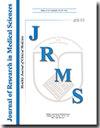伊朗首份成人高脂血症诊断、管理和治疗指南
IF 1.5
4区 医学
Q2 MEDICINE, GENERAL & INTERNAL
引用次数: 0
摘要
该指南是伊朗针对成人高脂血症的诊断、管理和治疗制定的第一份指南。指南制定小组(GDG)成员选择了 9 个相关的临床问题,并根据最新的科学证据为回答这些问题提供了建议或意见。建议包括确定无合并症的成人开始药物治疗的低密度脂蛋白胆固醇(LDL-C)阈值为 190 毫克/分升以上,甘油三酯(TG)阈值必须大于 500 毫克/分升。此外,还建议在开始和继续治疗时进行空腹血脂检测,并使用有效的伊朗模型进行心血管疾病(CVDs)风险评估。此外,还提出了一些关于将改变生活方式作为首要治疗干预措施的建议。建议将他汀类药物作为降低低密度脂蛋白胆固醇的一线药物治疗,如果在最大允许或最大可耐受药物治疗后低密度脂蛋白胆固醇仍处于高水平,则建议与依折麦布、9 型丙蛋白转换酶亚基酶/酶抑制剂或胆汁酸螯合剂联合治疗。对于患有高甘油三酯血症的成人,建议使用他汀类药物或纤维酸盐进行药物治疗。对于低密度脂蛋白胆固醇(LDL-C)升高且无合并症和危险因素的成人,药物治疗的目标是将 LDL-C 水平降至 <130 mg/dl,而对于总胆固醇(TG)升高且无合并症和危险因素的成人,药物治疗的目标是将 TG 水平降至 <200 mg/dl。在该指南中,针对普通人群中的亚群,如心血管疾病患者、中风患者、糖尿病患者、慢性肾病患者、老年人和女性,提出了具体的建议和意见。本文章由计算机程序翻译,如有差异,请以英文原文为准。
First Iranian guidelines for the diagnosis, management, and treatment of hyperlipidemia in adults
This guideline is the first Iranian guideline developed for the diagnosis, management, and treatment of hyperlipidemia in adults. The members of the guideline developing group (GDG) selected 9 relevant clinical questions and provided recommendations or suggestions to answer them based on the latest scientific evidence. Recommendations include the low-density lipoprotein cholesterol (LDL-C) threshold for starting drug treatment in adults lacking comorbidities was determined to be over 190 mg/dL and the triglyceride (TG) threshold had to be >500 mg/dl. In addition to perform fasting lipid profile tests at the beginning and continuation of treatment, while it was suggested to perform cardiovascular diseases (CVDs) risk assessment using valid Iranian models. Some recommendations were also provided on lifestyle modification as the first therapeutic intervention. Statins were recommended as the first line of drug treatment to reduce LDL-C, and if its level was high despite the maximum allowed or maximum tolerated drug treatment, combined treatment with ezetimibe, proprotein convertase subtilisin/kexin type 9 inhibitors, or bile acid sequestrants was suggested. In adults with hypertriglyceridemia, pharmacotherapy with statin or fibrate was recommended. The target of drug therapy in adults with increased LDL-C without comorbidities and risk factors was considered an LDL-C level of <130 mg/dl, and in adults with increased TG without comorbidities and risk factors, TG levels of <200 mg/dl. In this guideline, specific recommendations and suggestions were provided for the subgroups of the general population, such as those with CVD, stroke, diabetes, chronic kidney disease, elderly, and women.
求助全文
通过发布文献求助,成功后即可免费获取论文全文。
去求助
来源期刊

Journal of Research in Medical Sciences
MEDICINE, GENERAL & INTERNAL-
CiteScore
2.60
自引率
6.20%
发文量
75
审稿时长
3-6 weeks
期刊介绍:
Journal of Research in Medical Sciences, a publication of Isfahan University of Medical Sciences, is a peer-reviewed online continuous journal with print on demand compilation of issues published. The journal’s full text is available online at http://www.jmsjournal.net. The journal allows free access (Open Access) to its contents and permits authors to self-archive final accepted version of the articles on any OAI-compliant institutional / subject-based repository.
 求助内容:
求助内容: 应助结果提醒方式:
应助结果提醒方式:


